Morel mushroom hunting is a tricky business when you don’t know where to start. These mushroom gems like to blend right into their habitat, creating quite the problem for the forager. But, when you know where and when to look and what you’re looking for, morel foraging gets much easier.
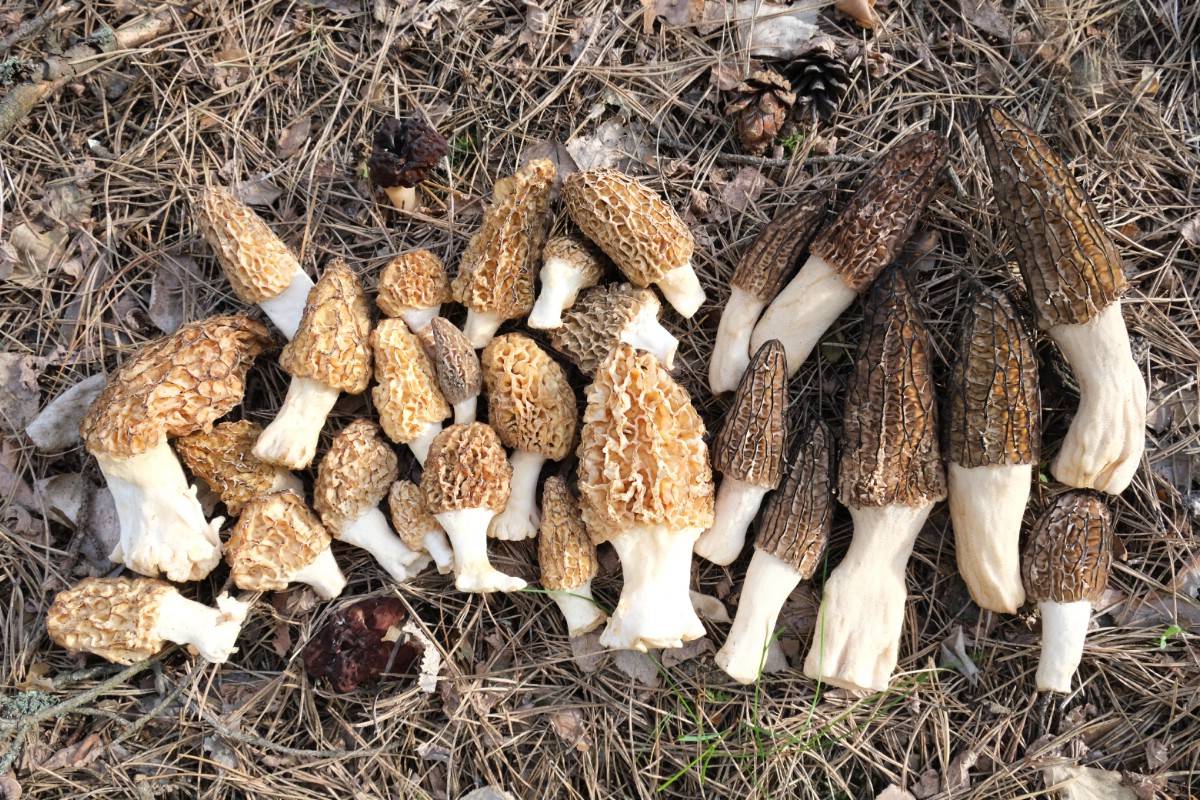
Here’s something that many people don’t realize – there are 18 (at least!) species of morels in the United States. And some vary pretty significantly. This means there is no “one” place to look that applies to everyone. If you live in the southeast, your foraging patterns will be vastly different from those in California. Simply put:
There is no “one” way to find morels.
Anyone who tells you differently is selling snake oil. To have success finding morels, first, you must identify which species grow near you. Second, you need to identify the key habitats for the morels that grow in your region. And lastly, you need to get out in nature, or use topographic maps, to find the habitats where morels are most likely to grow.
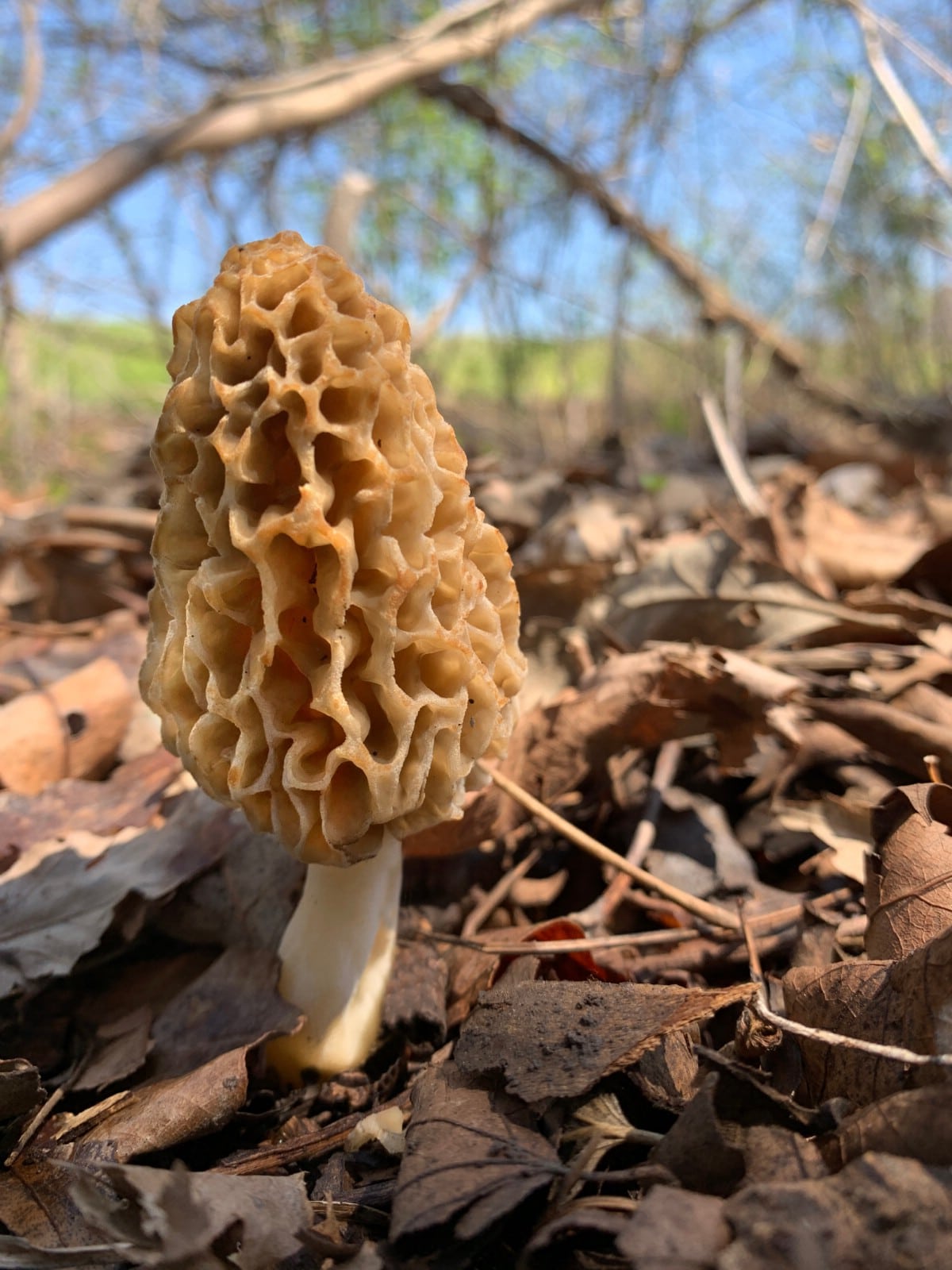
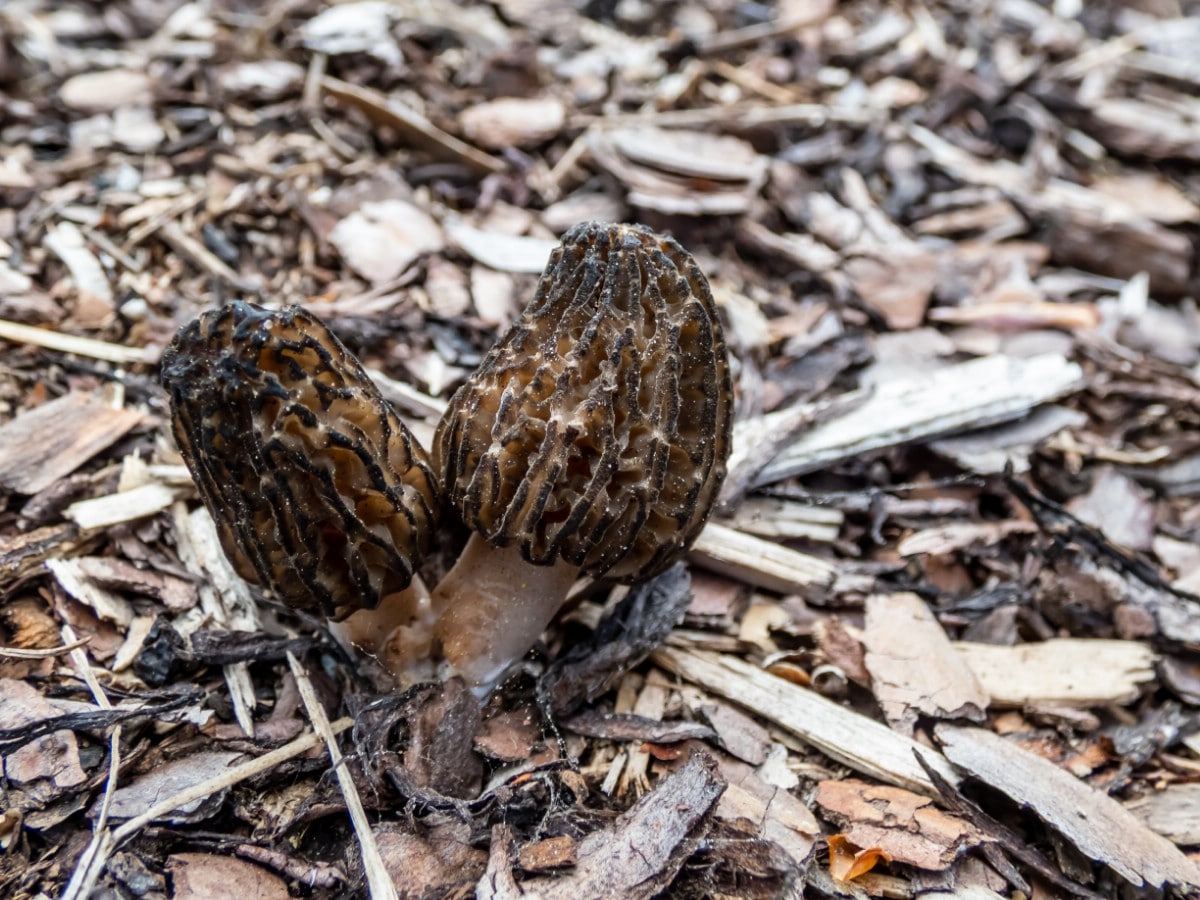
If that doesn’t sound easy, well, it isn’t. Mushroom hunting isn’t a low-energy, low-effort pastime. To be a successful mushroom hunter and morel forager, you must put the time into learning the craft. Sorry, there are no shortcuts with this one!
Ask any long-time forager, and they will tell you – sometimes you spend countless hours hunting and find nothing – that’s just the way it goes. Other days you take three steps into the woods, and there’s a bunch of morels just sitting there waiting for you.
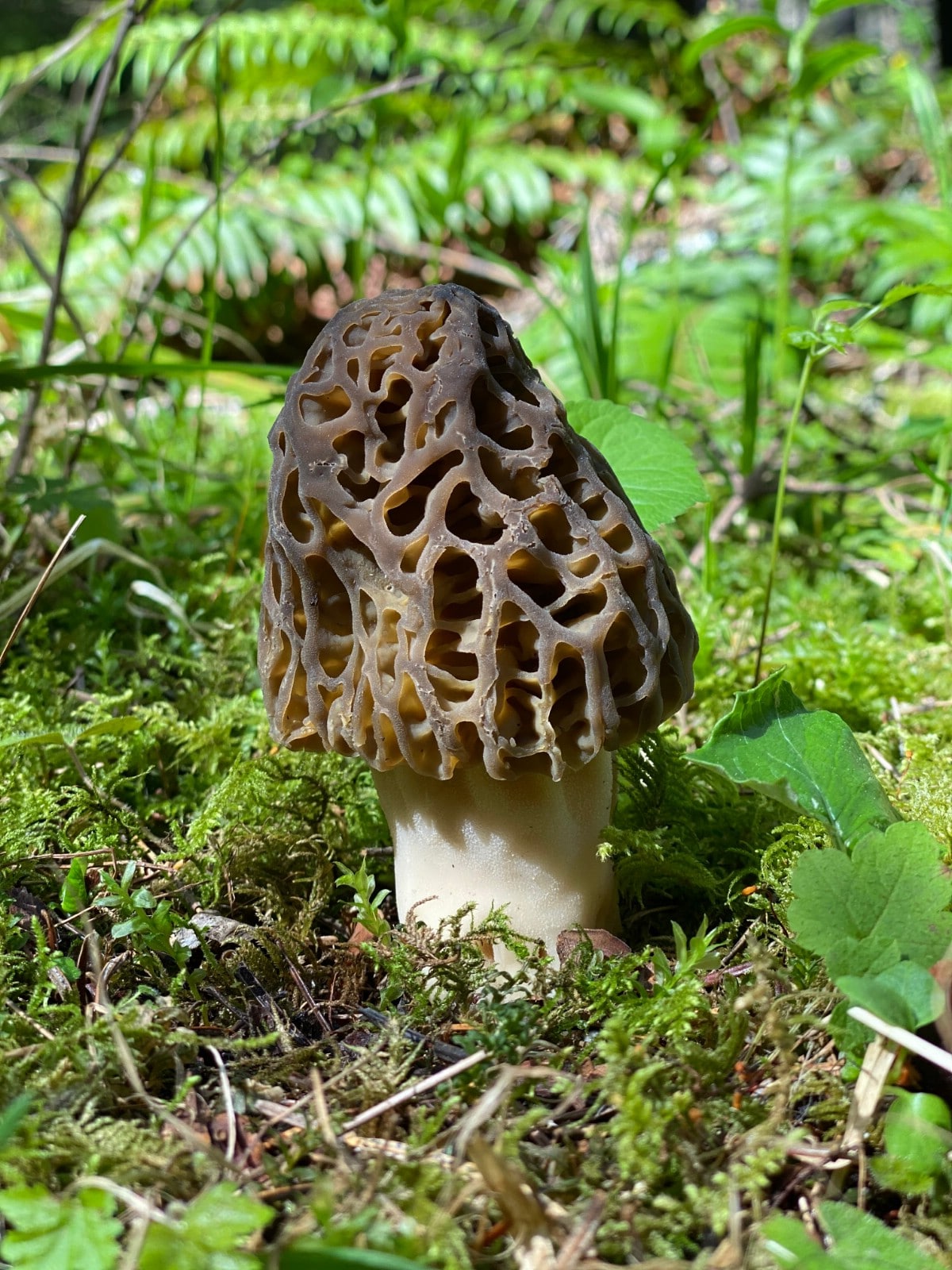
But then, when all that hard work pays off, and you find the beautiful morel in the wild, it is all worth it! And especially so because most morel species return year after year to the same location. So, you only need to find them once to be foraging them for decades. That is the true secret of successful morel foragers. Find just one or two good patches, and you’re set for years.
The 18 Morel Species in the United States, organized by location
Enough talk. Let’s learn the secrets of morel mushroom hunting!
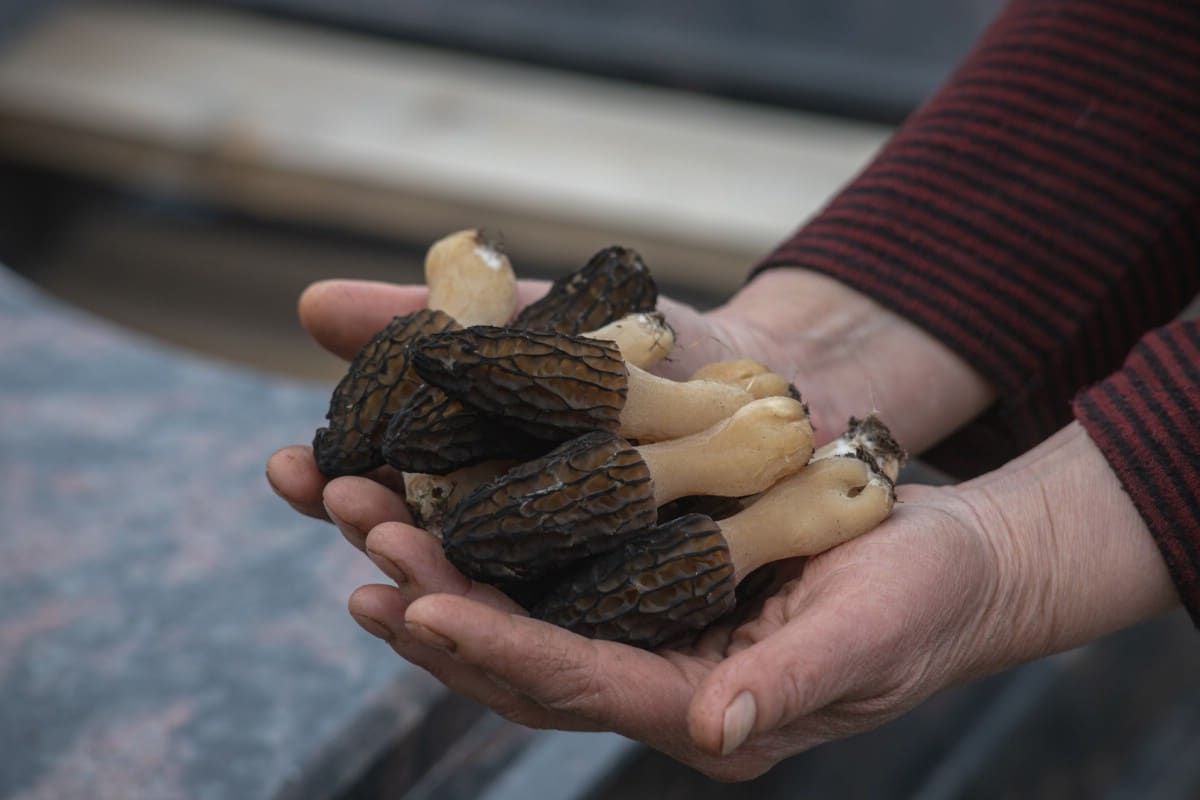
Jump to:
Time of Year
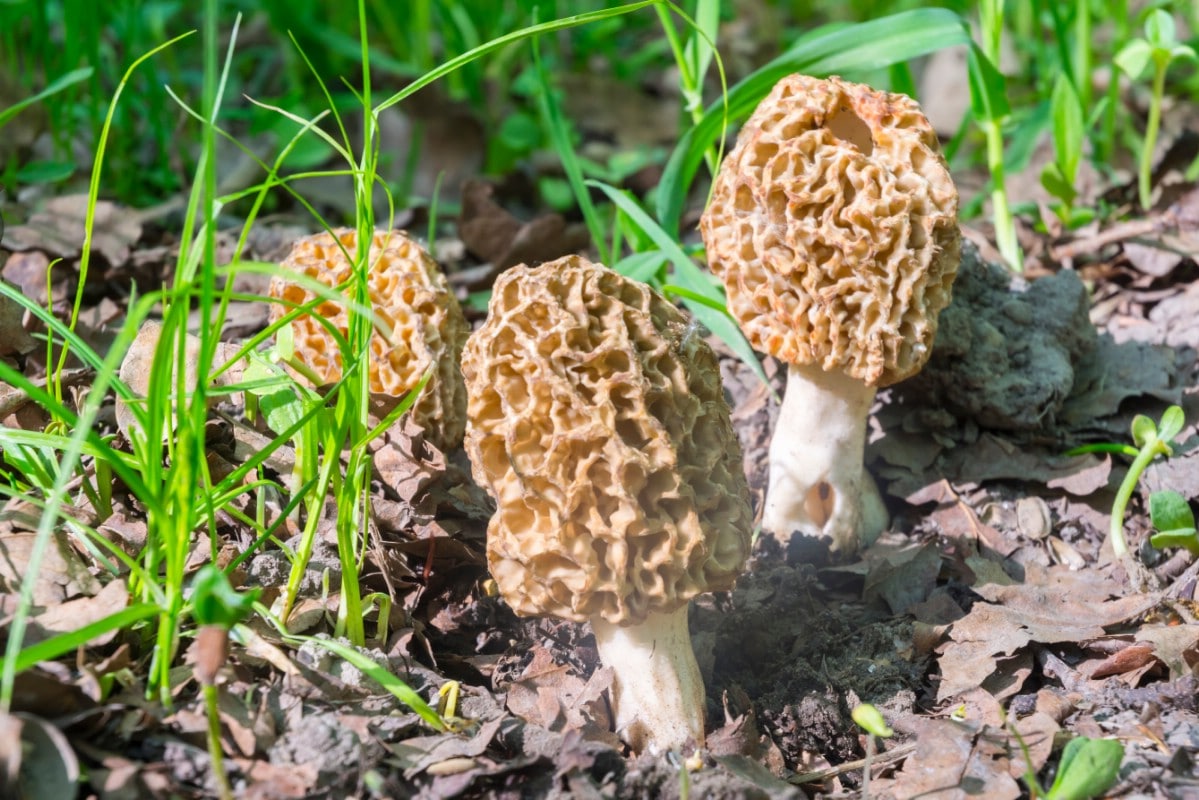
The shortest answer of all the morel mushroom hunting tips: spring.
Although the reality is that “spring” varies.
Spring can be February and March for the West Coast and the Southern US. The Mid West sees the most fruitings between late March and early May. In my area on the East Coast, morels usually fruit from late April to early June.
Parts of Canada and the North Western US will see fruitings into June. Other parts of the world may see some at other times of the year, depending on when their spring is.
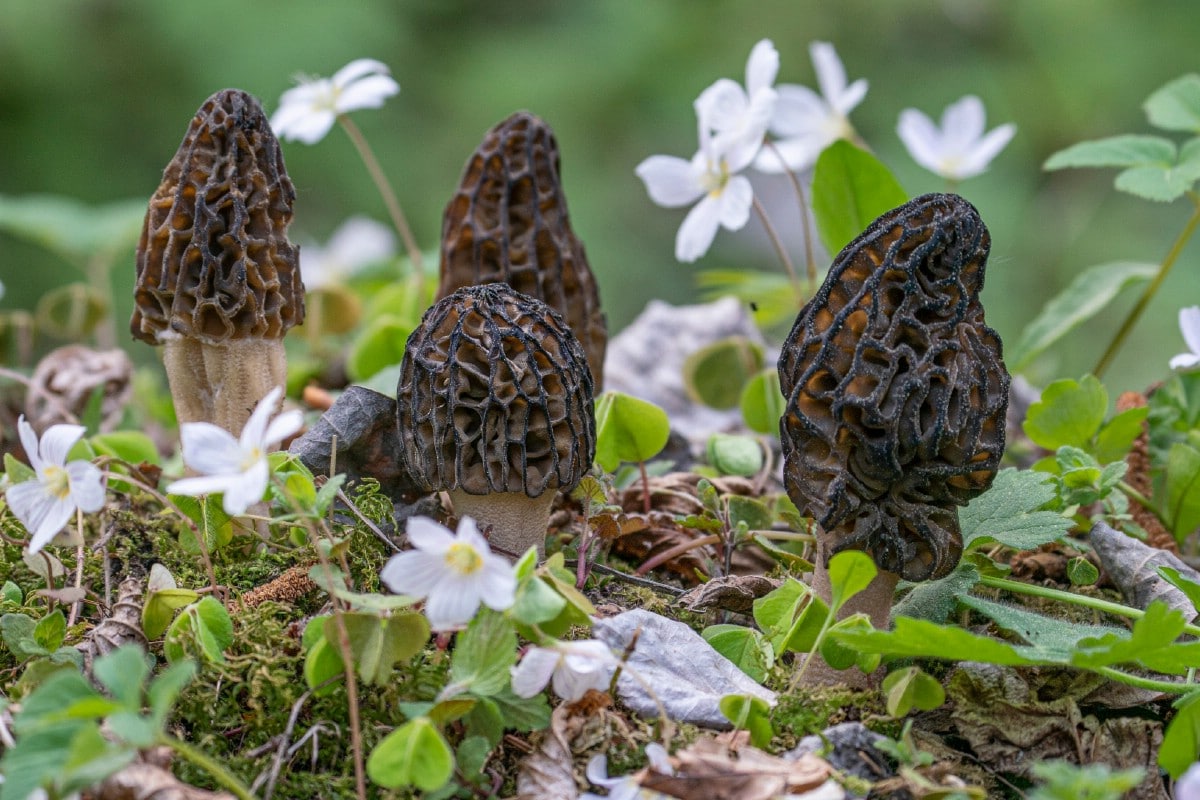
The most logical advice I can give for the time of year is to start searching during the two months when spring is considered to be at its height in your area.
Although if you’re truly morel-obsessed there’s nothing stopping you from mushroom hunting for the four months around spring!
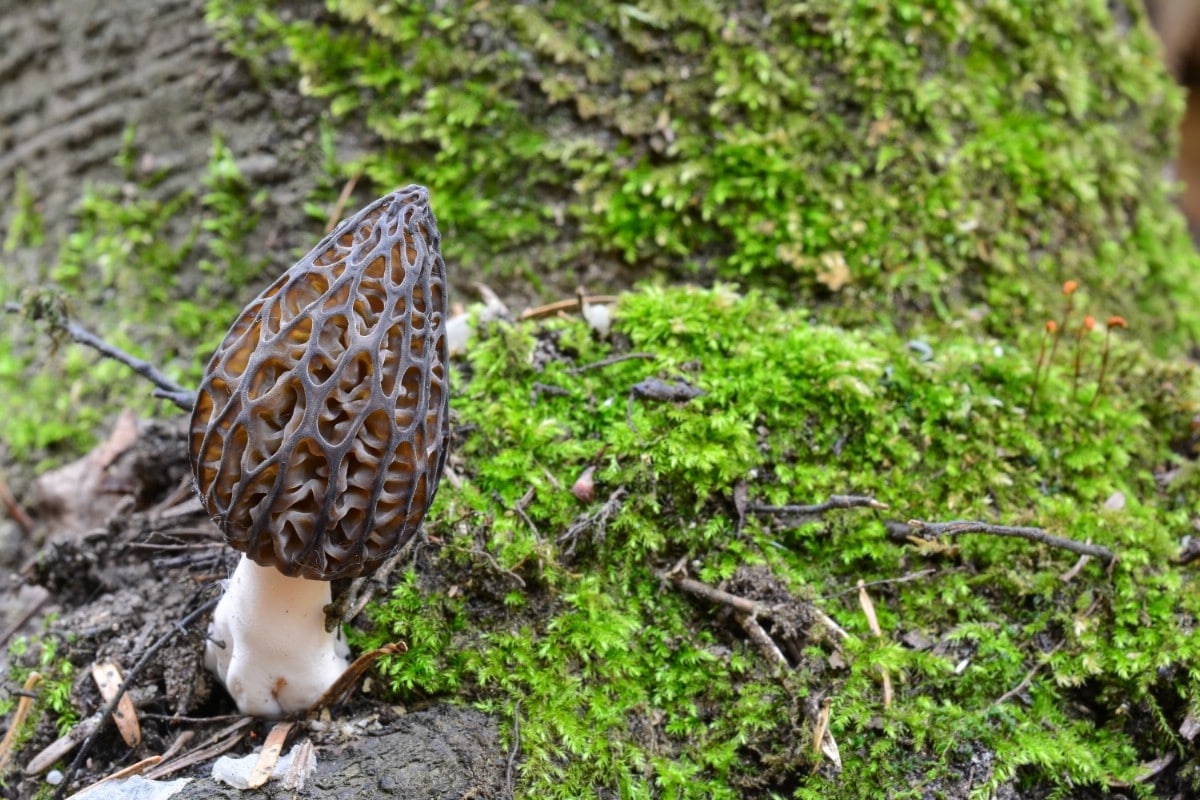
Habitat
Some of the most useful morel mushroom hunting tips deal with habitat.
Start by searching near certain trees. Morels are thought to be mycorrhizal, meaning they form mutualistic relationships with the roots of trees. For this reason, you must learn about the trees in your area. These are some of the trees favored by morels:
- Ash (particularly white ash)
- Elm (dead or dying is best)
- Apple (old ignored apple orchards that is, skip orchards that are very young and still used by man)
- Tulip (yes, there is a tree with this name!)
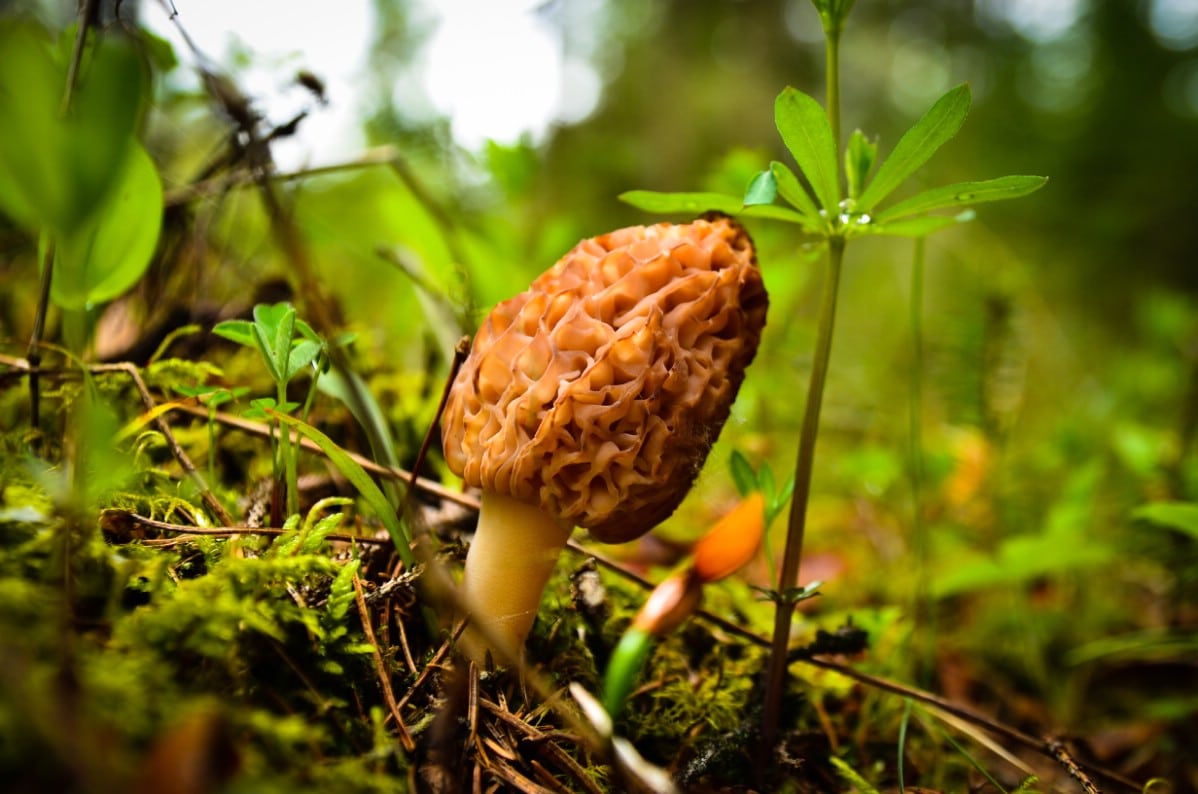
Another good place to look is in areas of disturbed ground. Mycelia produce mushrooms in response to environmental stress, so morels are often found around:
- Burn sites. One of my favorite mushroom teachers told me “morels love a burn”. He’s right, as morels thrive on the nutrients that burned trees release back into the soil. Burn site morels are more common in the West, although it’s still worth checking brush/forest fire or burn pit areas the spring after they’ve happened.
- Areas disturbed now or in the past by water. Examples would be old flood plains, near rivers, and near washes.
- Old logging areas or places with lots of downed trees.
- Other places where man has disturbed the ground. Avoid areas that are overdeveloped or have been chemically treated. You don’t know what kind of toxins could be in the mushrooms you find.
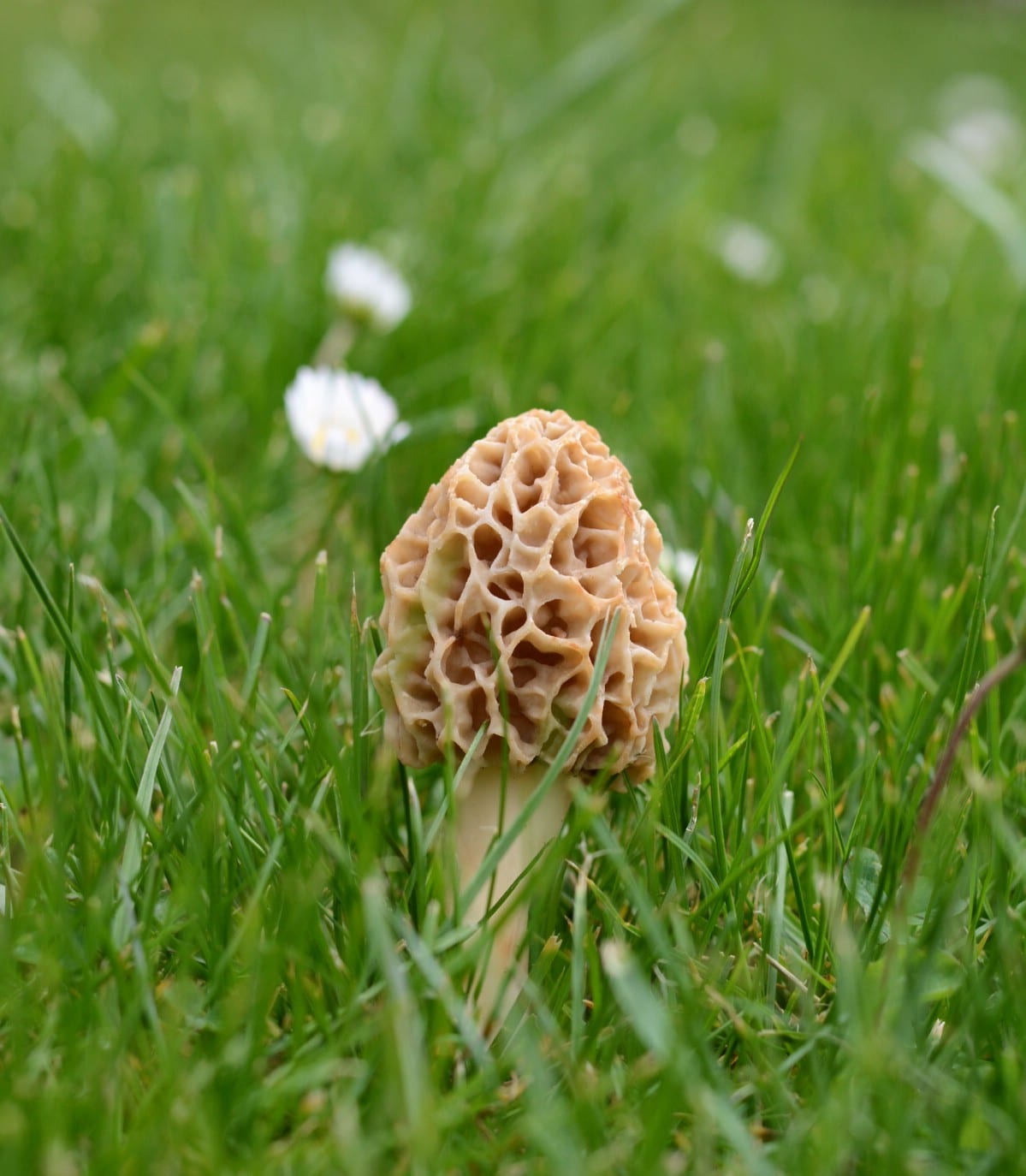
Soil composition is another thing to consider. You may not know what’s in the soil in your area, so consult a local amateur expert or a geologist (ask around at the nearest college). Morels are often found in these types of soil:
- Loamy – meaning a mixture of sand, clay, and decaying organic matter.
- Soil containing more calcium or lime. There’s so much granite where I live in New Hampshire, you’ll often have better morel luck by crossing the border and looking for more calcified soil in Vermont.
Environmental Conditions
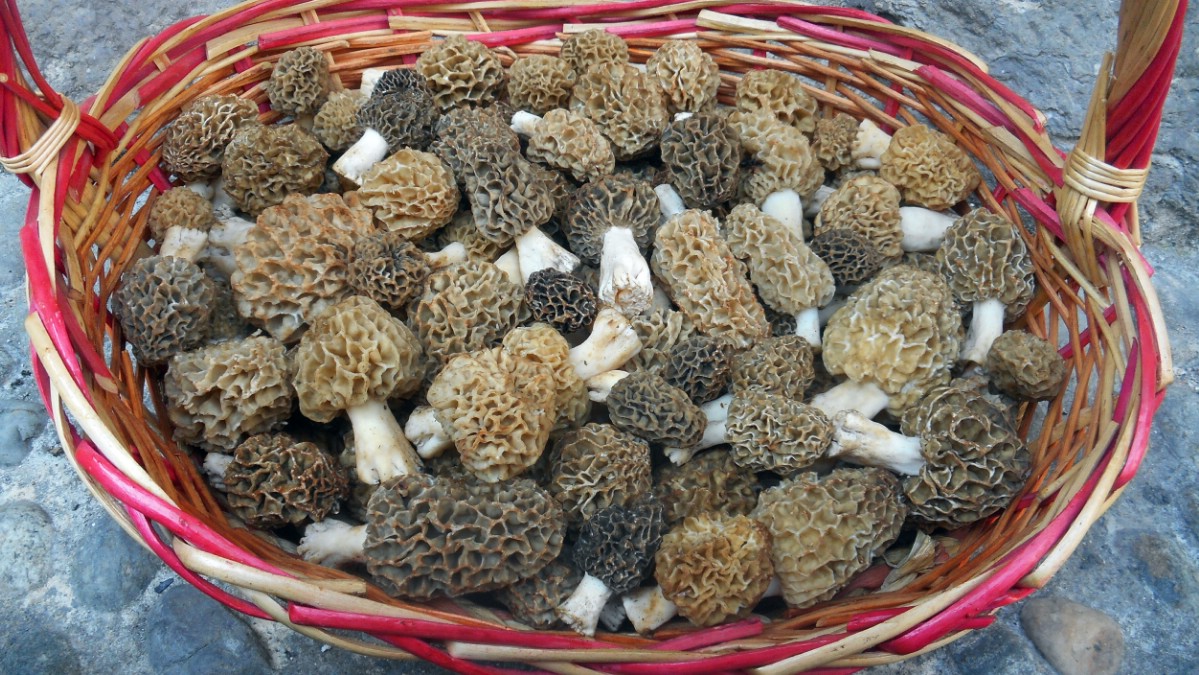
More morel mushroom hunting tips exist in regards to soil temperature, air temperature, and humidity. Morels seem to be most commonly found during these environmental conditions:
- After the first rain. All mushrooms need moisture, and the rain gives it to them.
- During the initial warm days and morning of spring.
- After the nights start to warm up. No colder than 40 degrees Fahrenheit.
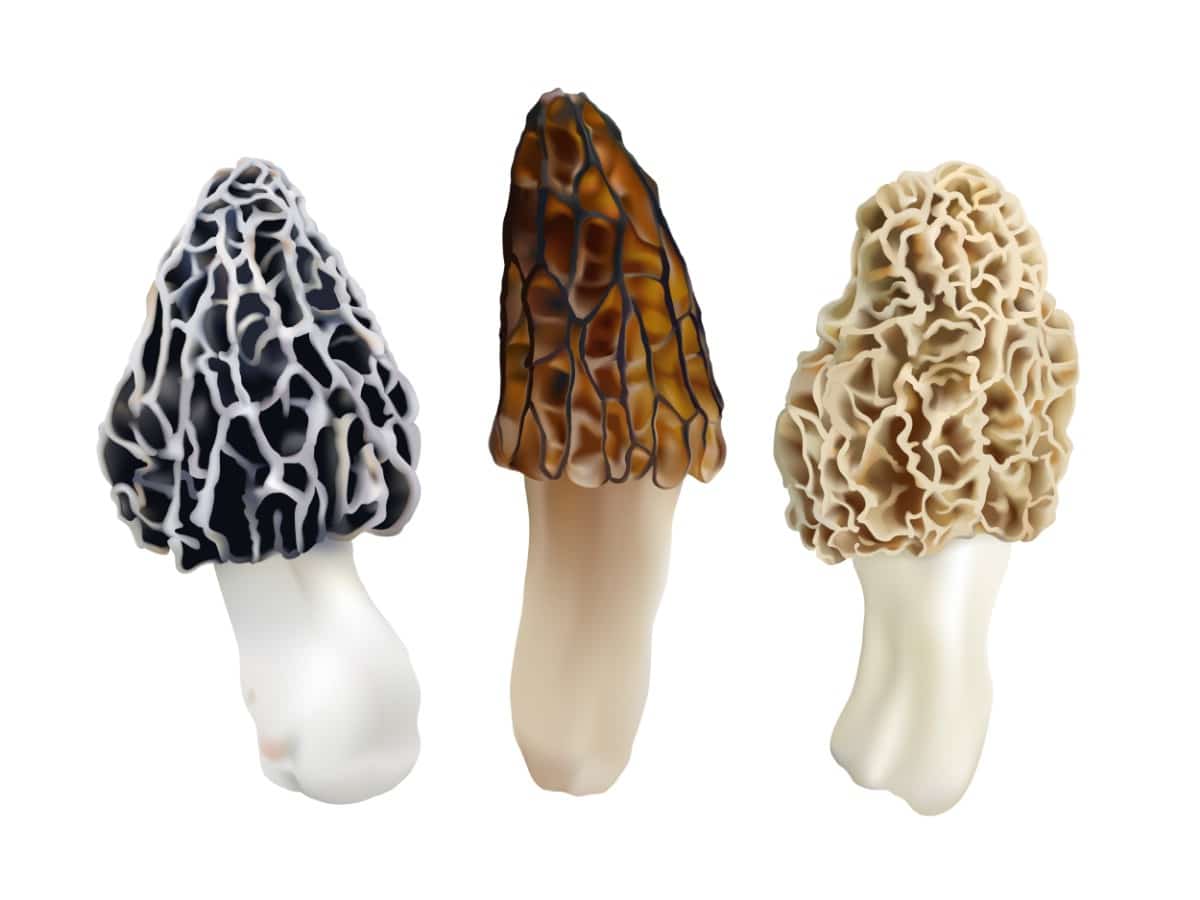
Morel Mushroom Foraging Tips
- Morels usually start showing up when the daytime temperatures are above 40F and nighttime temperatures are in the 40s. The soil temperature will be between 45-55F.
- Morels are pros at camouflage. Look closely and carefully in potential spots.
- Although there are only four specific burn-site morels, it seems all morel species appreciate some burnt land and ash. Yellow morels also seem to thrive near burn sites, although that’s not the only place they’ll emerge.
- Many morel species prefer injured or damaged trees.
- Morels rarely grow alone. If you find one, the likelihood of another (and another!) being nearby is quite high. Stop and look around, being very careful where you step as they frustratingly blend right into the ground litter. They grow scattered across the ground without any rhyme or reason.
- Go low. Morels are just a few inches tall and grow from the ground. You’re much more likely to find them if you get down to their level. Gazing from above is not a great way to forage a brown, black, or yellow mushroom that is basically the same color as the ground and leaf litter around it.
- If you’re new to morel foraging and still not 100% on identification, bring a reference picture with you to easily consult when you’re out and about. Take some time to study it. Success becomes a greater possibility when your eyes automatically know what they’re looking for.
- Get out there and explore. Yes, some people do find the landscape morels in their backyard, but it is not as common as social media would have you believe. And, those foragers bringing home bucketloads of burn morels likely had quite a hike in and out of the forest to acquire them. It’s not always easy, and the only way you’ll succeed is to get out searching.
- Morel hunting is like searching for Easter eggs. Embrace the process; take on the hunt with knowledge, good hiking boots, and an adventurous attitude.
- The most successful morel foragers have huge harvests because they:
- Study the morel species in their area.
- Study the land.
- Look at topographic maps.
- Pay attention to their environment.
- Learn their trees and morel to tree associations.
- Hike, hike, hike, and hike some more.
- Utilize the morel sightings map to know when they’re fruiting in your area.
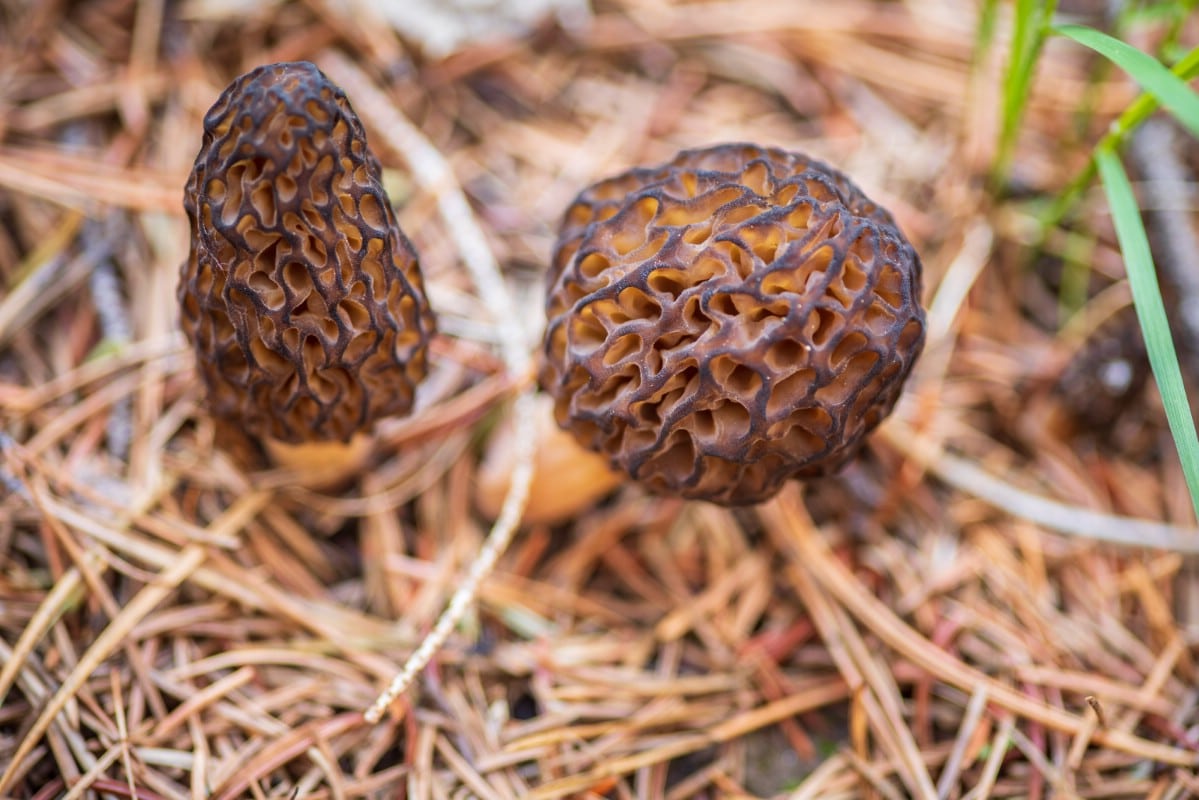
Morel Mushroom Etiquette and Personal Safety
I would be remiss if I didn’t mention a few things about safety. While not morel mushroom hunting tips exactly, they’re on here in the hopes of keeping you and the forest safer:
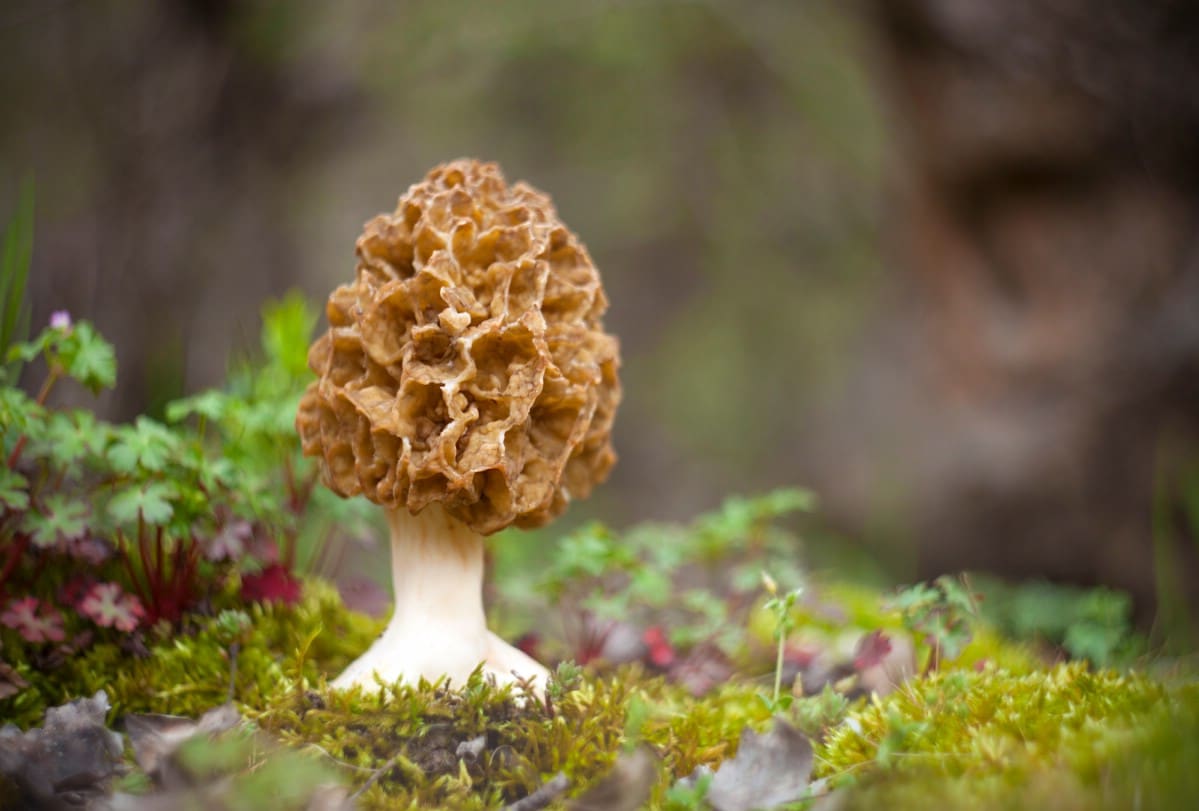
- Learn how to properly identify morels. There are poisonous false morel look-alikes that can make you sick or even kill. See this page on morel mushroom identification if you need help (includes a quick chart).
- When wild mushroom hunting, carry your finds in a mesh bag. Wild mushrooms spread through the dispersal of spores, and the more spores you allow them to drop the better the chances of more mushrooms in the future! Baskets or paper bags don’t allow spores to spread, so find something with large holes in it.
- Don’t litter. Mushroom hunters usually have too much respect for nature to do this but I have to mention it. It’s extremely disgusting behavior and you can be fined.
- Don’t directly ask someone where to find morels. Any mushroom hunter worth his/her salt won’t tell you, and depending on where you are you may make some enemies!
- It’s easy to get lost in the woods, especially if you’re looking at the ground for mushrooms. Know your area, or carry a map, compass, and GPS if you don’t.
- Bring a friend. Don’t wander the woods alone, and it never hurts to carry mace or pepper spray. Think me paranoid? You’ll be glad if you have the extreme bad luck of running into an angry moose, a mother bear, an aggressive dog, or an unstable human (most dangerous of all).
- Beware of ticks! Where I live in New England, Lyme disease is a growing problem. Always wear long pants, socks, and use some natural bug spray if you have it (DEET free please). Also check yourself when you come home and take a shower.
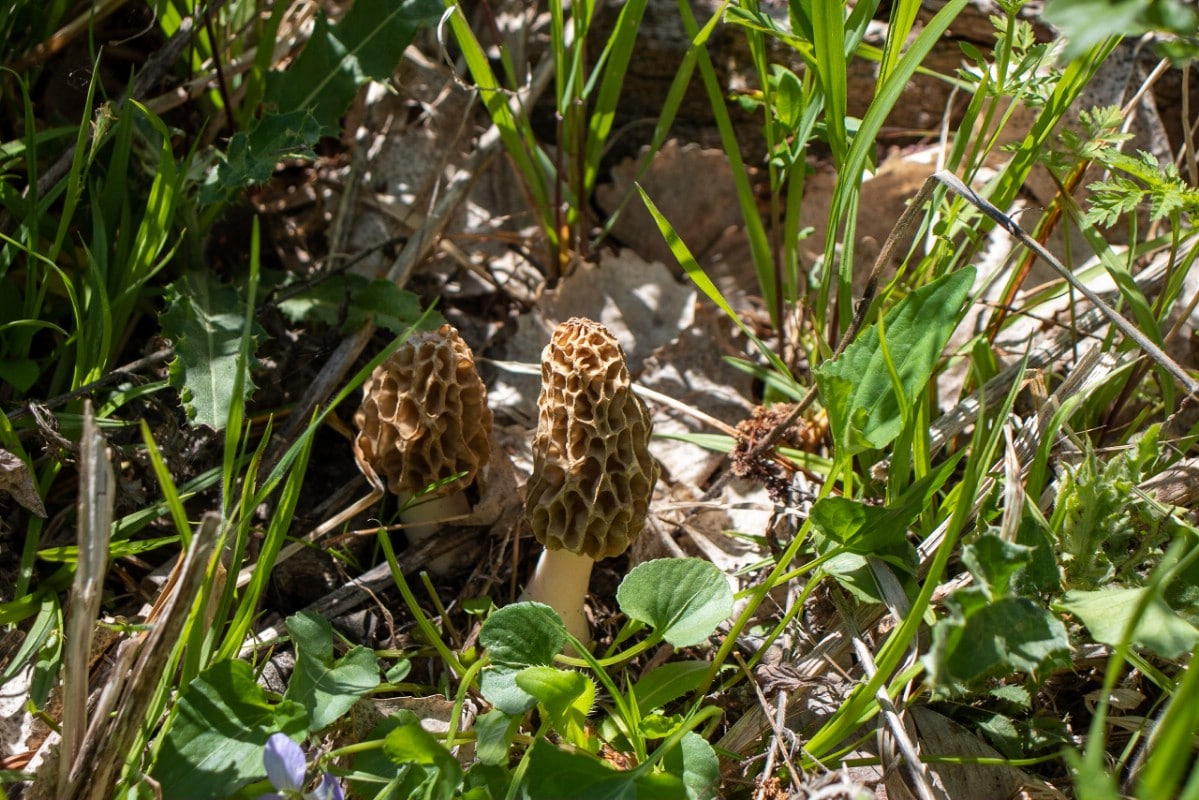
Morel Foraging Trivia
- Most morel species are particular to a specific geographic area.
- Black morel species are split by the Rocky Mountains; they are either in the west or east. None of them appear on both sides.
- While many morels are either eastern or western species, there is one type that fruits countrywide – the aptly named Morchella americana.
- Not all morels are symbiotic with trees. Some species are only saprotrophic, feeders of dead and decaying material. However, the majority do rely on mycorrhizal associations with very specific tree species.
- Morel season lasts approximately a month. When that month starts depends on where you live. In the south, it’s March – April. In the northeast, it’s all of May. The Pacific Northwest season usually starts in April.
- Morel mushroom fruiting is dependent on weather and climate conditions. Each year it will vary. As climate change happens, seasonal shifts are changing the fruiting season too.
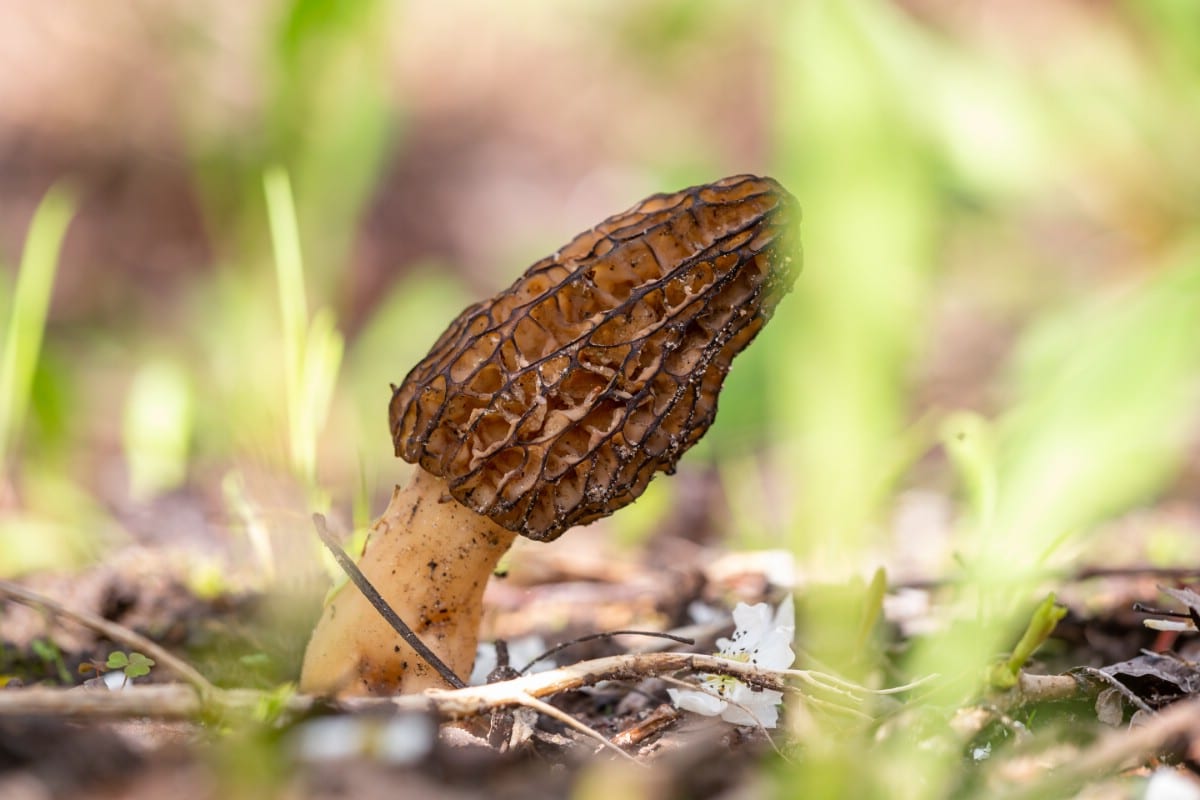
Sustainable Morel Foraging
Don’t forage them all! Seriously, it’s so tempting to collect all these yummy mushrooms, but you have to leave some behind. Preferably, leave at least a third of them behind. Sustainable harvesting promotes consistent yearly flushes. The fruiting bodies produce spores to propagate more mushrooms in the future; if you take them all, you are limiting this process.
Once you’ve found morels, learn the best ways to harvest and prepare them!
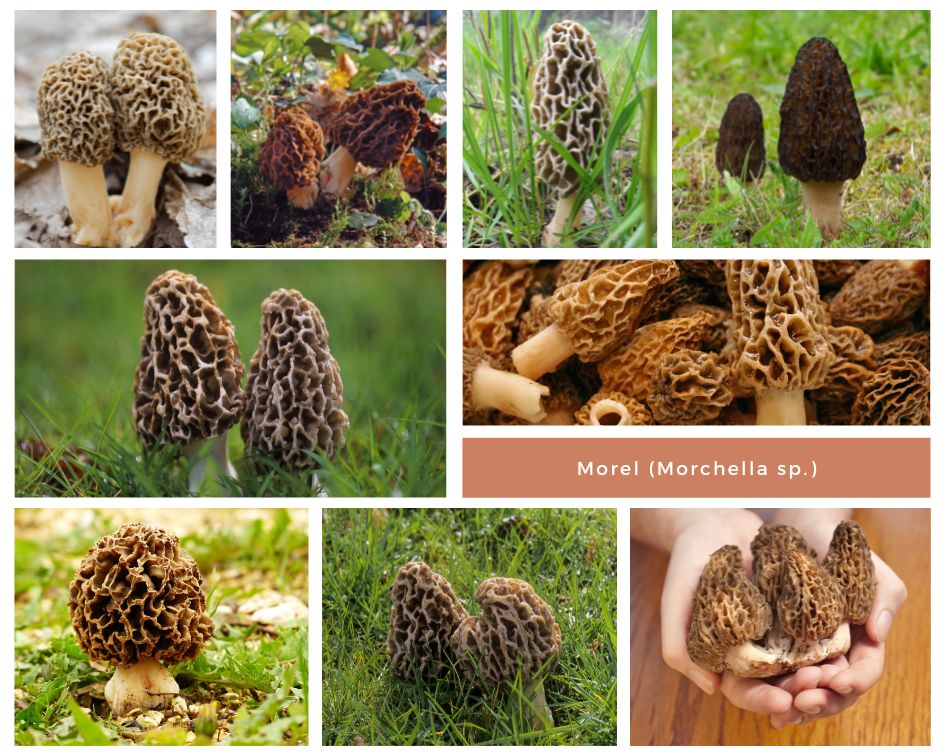
Morel Mushroom Foraging Common Questions
Are morels safe to forage?
Yes, all morels are edible. However, there are some very close and dangerous lookalikes, so it is critical that you learn and understand all the identification points.
How can you tell a morel and false morel apart?
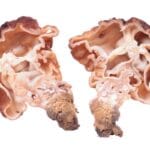
The easiest way is to cut the mushroom open. A true morel is completely hollow inside. False morels are stuffed inside with a cotton-like material. The second key to identification is how the cap is attached to the stem. A morel cap is attached to the stem at the bottom of the cap. False morels cap is connected to the stem at the top of the cap.
Just to make life confusing, though, there are two half-free true morels with caps that attach to the stem half-way down. This is still different from false morels so it shouldn’t be too confusing.
Do false morels and morels grow together?
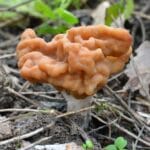
Yes! They share habitats so always be careful when foraging.
Can morels pop up overnight?
Absolutely! After a good rain, they’ll emerge quickly. But, usually they’re super small so it’s hard to see them. To get to foraging size takes around 6-10 days, depending on weather.
Sick of the hunt? Say it isn’t so! Check out the dried mushrooms page.

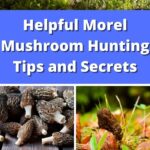
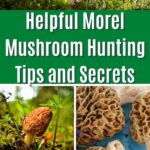
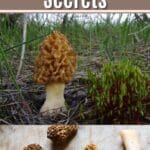
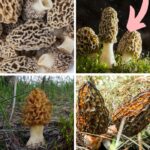
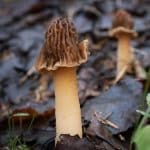
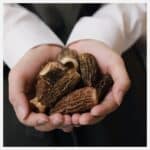
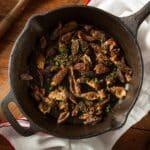
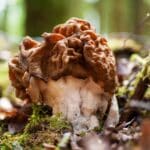
Debbie says
Thank you. I have learned a lot!
Buddy says
Thank you good info & reminders happy hunting
Jenny says
Glad you found the information helpful. Happy morel hunting to you too!
Sarah says
We were setting up our camping property today and I think I mowed over a morel! I couldn’t find any more, but now I have some ideas of where to look next time we go back!
Jenny says
Oooo! That’s fantastic! It’s so funny how we find them by “accident” and makes all the difference when we know what we’re looking for. Definitely keep an eye on that spot — they reappear year after year
Sally Martin says
Do morals grow only for one night and be done or do they keep growing
And get bigger?
I was told years ago that when they grow that night they won’t grow
Any bigger the next night.
Thank you
Jenny says
That’s a new one I haven’t heard before! No, they do not do all their growing in one night. They grow a lot in the first few days, until they reach their determined size, then they start to break down, decompose etc… They do most of their growing over the course of a few days, so I can see how someone would think it’s just one night. Think of them like flowers — they sprout, grow to predetermined size, stay that way for a bit, then release their spores (seeds), and die. The entire process lasts anywhere from 2-5 weeks, depending on the weather and climate conditions.
Becky says
They are getting harder to find. Their habitat is being taken over construction and Personnel Property. All my good spots are gone!!!!!!!!!!
Jenny says
Oh I’m so sorry to hear that, losing prime spots hurts! Totally agreed, habitat for fungi and so many other species, plants and animals too, are being destroyed and it’s so difficult and sad to see
Kelly says
It finally poured down rain all day today which is what we waited for and we went mushroom hunting tonight and had no luck although we are going first thing in the morning looking so forward to finding some real morels and lots of them. Good luck everybody.
Jenny says
Happy hunting to you as well! Be patient and remember, you don’t need to find lots of spots, just one or two fantastic spots! 😉
Norman Guevin says
This is an awesome addition to my reading materials on mushrooms. Thank you for posting this info.